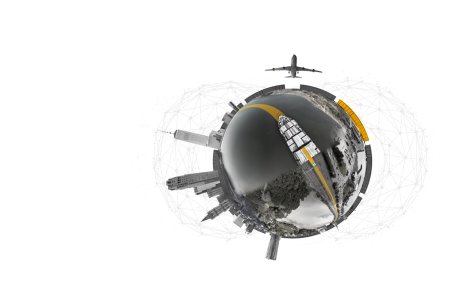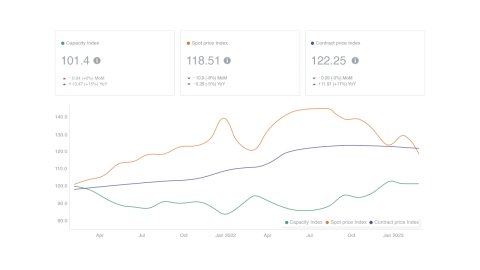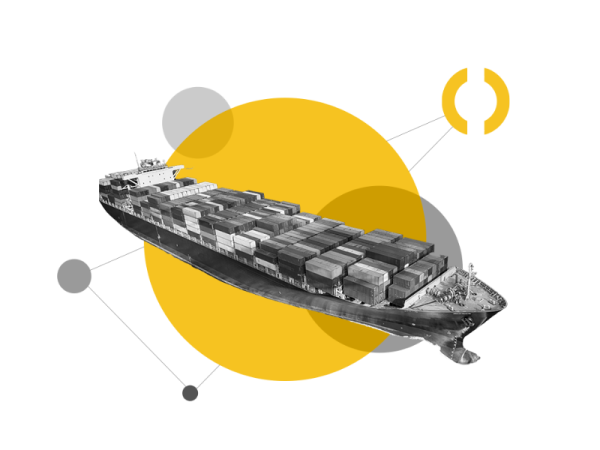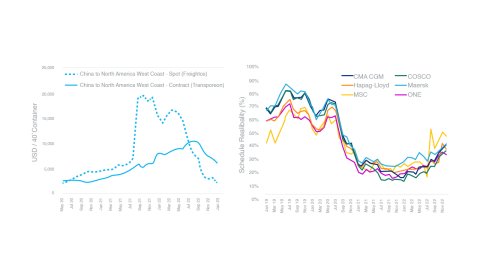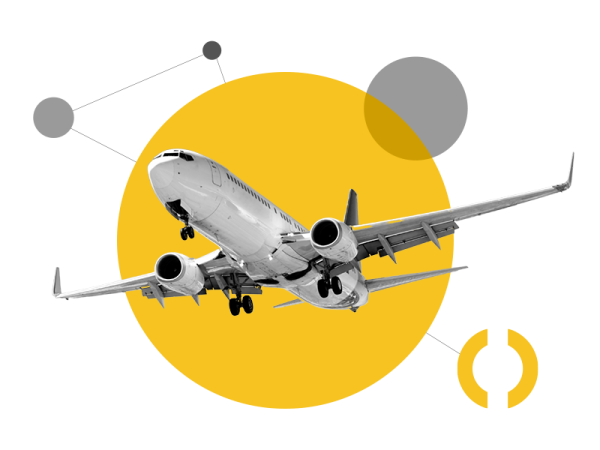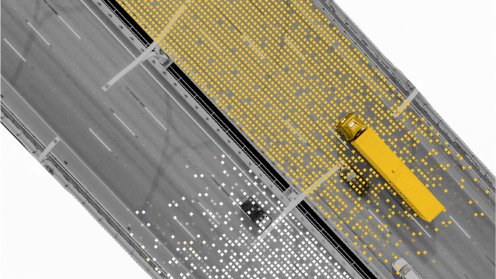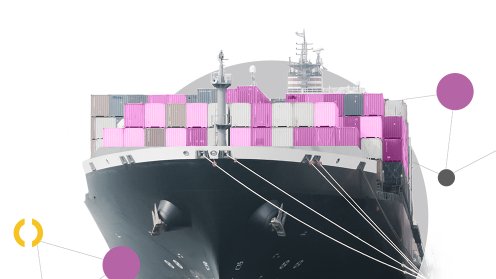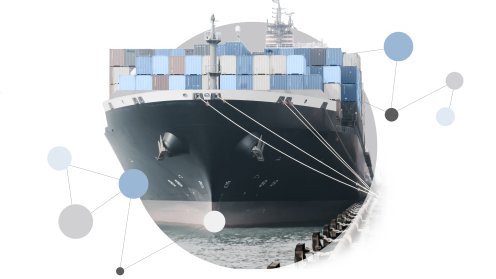The Whole Picture
Nick Poels, Tribe Lead Transport Operations
Looking at the transport sector as a whole, Nick Poels confirmed a clear trend towards a shippers’ market, adding that it takes a brave individual to predict, given the turmoil of the past two years.
Nick highlighted the role that technology is likely to play in assisting shippers and carriers with their strategies in fast-changing times. He pointed out that while the spot market is traditionally seen as a tactical weapon to help make cost savings, clever utilisation of the right technology can help blend the perfect spot/contract recipe. Like financial trading floor screens, the ability to see shifting buy-and-sell trends, at a glance, promotes more informed and confident decision-making.
Technology also provides the tools for mutual collaboration benefits. With demand coming down in parallel with prices, it is tricky to maintain a proper balance, hence the importance of working together with partners, in order to see the whole picture.
Nick was asked if the sector is about to see a change in the procurement cycle: “Certainly, any sensible shipper is reviewing their contracted lanes at this point, exploring if they have the right lanes, at the right prices and so on. In addition, it is always healthy to have some spot. Make use of your ‘spot muscle’ in certain areas. Yes, some shippers like the peace of mind that comes from being on top of costs in the contract market. That's fair enough if you’ve been a professional in the logistics space over the last two years. But the opportunity is there with spot at the moment. You’re leaving an opportunity cost on the table.”
Nick ended by describing how automation has an important role to play to enable shippers and carriers to respond to market changes. Price prediction functionality will be a key element in this, offering evidence-based guidance on competitive future market prices. Traditionally, price strategy has been set by sticking to a set of rules, whereas technology can help you target and achieve a set of goals, whether they be geared towards cost-saving, or performance.
Finally, Nick acknowledged that the bigger companies, with the larger teams and most extensive fleets under management, tend to adopt technology first. This is because the commercial benefits are usually so much easier to justify when the numbers are so substantial. However, the prize for SMEs is also now within reach, with the potential for measurable wins much clearer and easier to identify.
